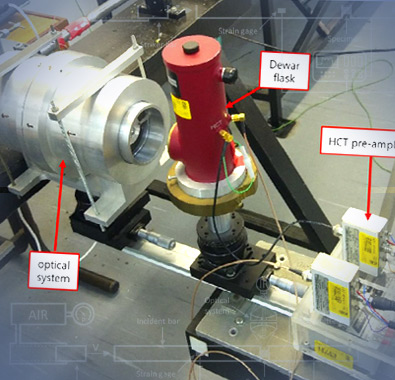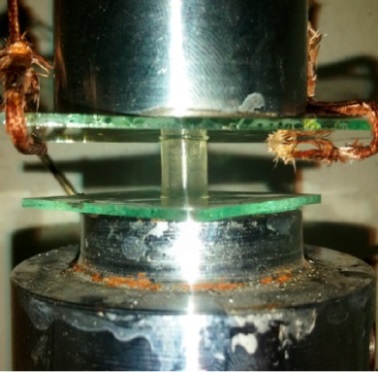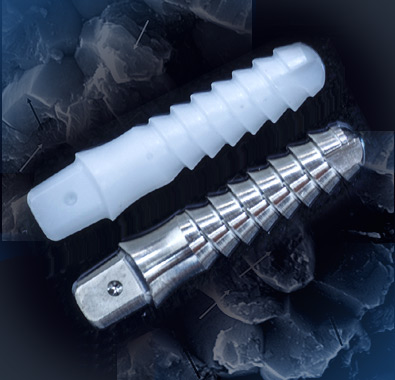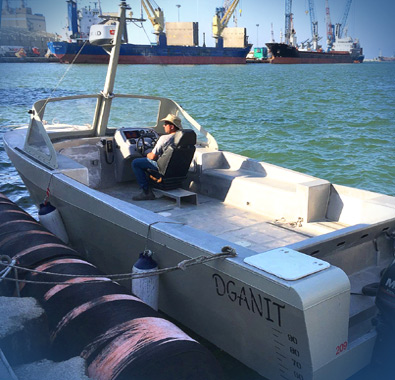 Research Areas
Research Areas
Who has never seen an object fracture rapidly, like a plate or a glass falling in the kitchen? What is the physics governing dynamic fracture of a structure? Can we identify physical failure criteria that will help us creating safer structures or simply assessing the impact reliability of existing structures?
A lot of fascinating features characterize dynamic fracture. First is the counter-intuitive role of inertia, that reminds very much of karate movies in which the hero breaks a brick held by no one. Next come the very large crack propagation velocities (km/sec) that make the experiment last at most 2 millionths of a second for our specimens! In such experiments, the physics of the fracture process can only be assessed through extensive use of our ultrahigh speed camera, and also numerical simulations that can help revealing phenomena that are not readily measurable.
And if you browse through the thermomechanics section, you will see a strong connection to thermomechanical couplings and transient temperature changes at the tip of a crack…In short: Multiphysics at its best.

Upon violent impacts, materials tend do heat significantly and exhibit unique failure mechanisms, such as adiabatic shear banding. A first experimental challenge is to measure the transient temperature changes under various loading scenarios, namely a few tens of degrees in less than 50 microseconds… Understanding the underlying physics of the heat generation, release and internal storage remains an essentially open question.
What is the role of the microstructure in the overall dynamic failure and fragmentation process? Can we control catastrophic failure, promote or delay it by subtle composition/microstructure changes?
Those are some of the basic issues we are investigating to create better shock resistant materials.

Soft matter, like rubber or gels, is a fascinating class of materials whose applications have not yet be fully explored. We have a keen interest in hydrogels, developed by our chemist colleagues, and their amazing capability to mitigate strong shock energy. Those are precisely the materials you would like to have in your biking helmet, flak jacket, boots and more in order to attenuate blunt impact trauma.
In fact, it so happens that the vast majority of protection systems are aimed at defeating an incoming threat using e.g. hard steels, ceramic plates or their combinations. And indeed, these armor or/protection systems ate very efficient for that mission. The problem is that upon impact, whether destructive or not, an elastic shock wave propagates through the protection and violently accelerates the tissues or skull behind it, creating what is referred to as “blunt shock trauma” that can be lethal.
Our interest in soft matter such as hydrogels is precisely to overcome and defeat this specific threat of the traumatic impact, hoping to save not only lives but also protect structures and sensitive equipment.

The bad news is that dental implants tend to break, after a certain variable time. But the good news is that the reasons for this mechanical fatigue failure are well understood now and can be remedied by suitable design modifications to existing procedures. But even more interesting and challenging is the interaction between the inert (implant) and the living (jawbone) materials.
On the one hand, one must learn about the jawbone geometry and mechanical properties, including their evolutions in space and time. But one must also characterize the fine scale features of the implant, namely its roughness and degree of surface cleanliness.
And, what about the intraoral atmosphere and mastication habits that vary with each subject? Now try to integrate all this data into a “simple” framework…..We are just scratching the surface of this complex biomechanics subject. Call it “Dental Engineering” if you wish….

Basic research is also implemented into real engineering projects. This is the case of polyurea coating protection for high speed planing boats (Deganit), development of practical tools to implement scaling concepts for blast protection based on miniature models, or the development of cheap constrained polymeric armor plates.
Another relevant field of activity is that of failure analysis of materials systems, where the issue at stake is the determination of the cause(s) and mechanisms(s) for the failure of a structural components, and no less important, the recommendations in order to avoid similar future failures.
Behind the analysis itself, you will find a strong blend of solid and materials mechanics, as well as materials science and metallurgy, that assist all together in elucidating the most probable causes and mechanisms for the observed cased of failure.

